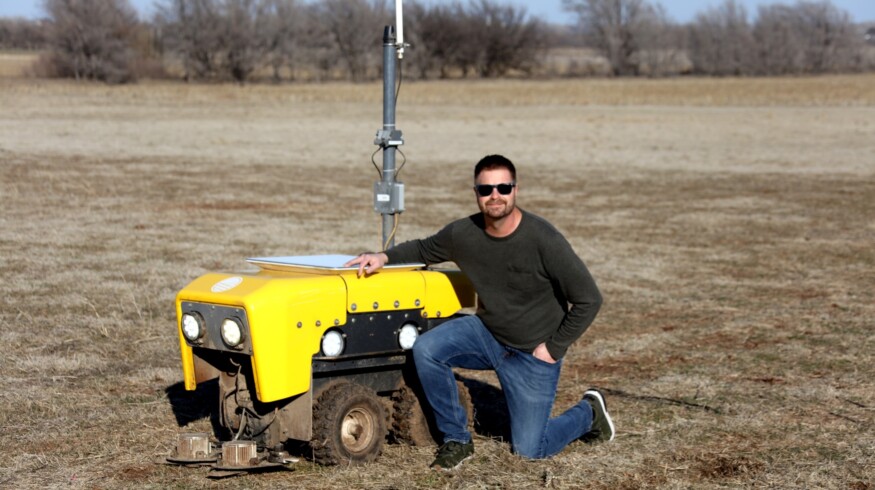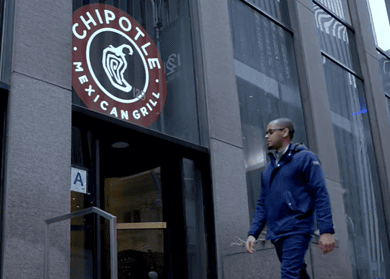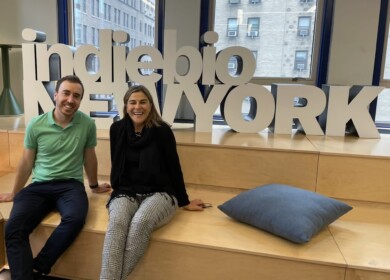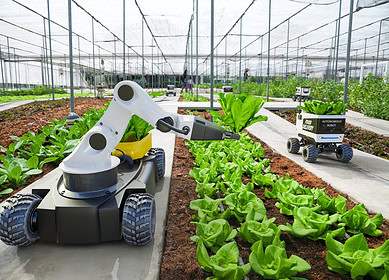Exclusive: GreenField’s Clint Brauer on robots and regenerative agriculture

Robots out in the field? Ten years ago that might have sounded somewhat outlandish, but, due to the latest advances in AI and computer vision, autonomous machines are quickly becoming an indispensable tool for smart, sustainable farming. And, importantly, they can help crop growers to save money on fertilizer and expensive chemicals.
Now, one of the companies spearheading the development of these technologies is GreenField Robotics. It is on a mission to make regenerative farming more efficient and more cost effective. We recently had the privilege of speaking to GreenField’s CEO, Clint Brauer, to find out about how the company is helping to shape the future of farming.

FD: Thank you for talking to us about the ways in which new technologies are helping to transform an agricultural industry that remains very conservative. Can you briefly tell us what GreenField Robotics does and what your robots are capable of?
CB: Thank you for inviting me. At GreenField, we specialize in developing and deploying autonomous BOTONY© robots-as-a-service that significantly reduce the need for chemicals in broadacre farming. Our bots are designed to navigate fields, equipped with high-powered blades to cut weeds close to the ground. We operate on 30-inch row crops like sorghum, sunflowers, cotton and soy. By replacing chemical herbicides with mechanical weed control, we can scale regenerative farming practices without diesel, tillage or herbicides. Our robots also mitigate concerns over herbicide resistance. This technology is not only built to support farmers but also anyone who wants to eat food without all of the chemicals.
FD: GreenField says that its robots enable farmers to switch to chemical-free farming. How can growers make the change?
CB: GreenField’s Robots-as-a-Service model can offer fair deals to farmers and is priced comparably to traditional weed-control methods. Even small farms can transition to a chemical-free approach by replacing their need to spray herbicide, post-plant, or till their fields by leveraging our bots. We’ve also focused on building regenerative supply chains to make the transition to chemical-free farming even easier and more affordable. These supply chains allow our farms to sell crops directly to ingredient manufacturers who care about human health and sourcing regeneratively-grown ingredients while returning some money to the farmers’ pockets.
FD: Are your robots better suited to working with any particular crops?
CB: Our BOTONY© robots are highly effective against broadleaf weeds like marestail and pigweed in crops like soy, sunflower, cotton and sorghum. With precise navigation, they facilitate the transition to regenerative farming by minimizing soil disruption, which is vital to crop health. Via our Robots-as-a-Service model, this technology becomes accessible to farms of all sizes that grow 30” row crops.
FD: Do you plan to expand beyond weed cutting to allow farmers to use your technology at other stages of the agricultural cycle?
CB: At GreenField, our vision extends beyond weed control. We’re evolving our BOTONY© robots to support several stages of the agricultural cycle. We’ll be adding new attachments and capabilities to the bots to address different regenerative practices throughout the 2024 season. This expansion goes beyond just adding additional functionality. It’s about creating an integrated approach to regenerative agriculture.
These enhancements will empower farmers to manage their crops more effectively and restoratively, reducing reliance on outdated methods that impact the health of soil and humans alike. Our aim is to make our GreenField a comprehensive solution for scaling regenerative farming and chemical-free food.
FD: You recently received an investment from Chipotle’s $50mn Cultivate Next venture fund. Will the new funding allow GreenField Robotics to develop its technologies further, or are you now looking at expanding into new markets with the current technology stack?
CB: The investment from Chipotle’s Cultivate Next venture fund marks a major milestone for GreenField. It will help us continue to develop the robots and their capabilities. We’re also exploring new opportunities to deploy our robots into more regions beyond our current work in Kansas and Texas. This partnership with Chipotle, a brand deeply committed to sustainability, resonates with our core values of promoting regenerative, chemical-free farming practices. It’s more than funding with Chipotle. It’s a strategic collaboration that propels us toward a future where regenerative agriculture is the norm, not the exception. With this support, we’re poised to advance regenerative agriculture and build healthier soils to yield cleaner food and a more resilient food system.
FD: Where have you seen greater uptake so far, on small farms or big farms? Who would benefit most from your technology?
CB: Our early adopters are a diverse group, from small family farms to large commercial operations. Our BOTONY© robot fleets are especially advantageous for farmers grappling with labor issues and seeking cost-effective solutions or trying to cut margins to manage their crops regeneratively. Our bots aid them in scaling their regenerative practices, reducing chemical usage, and improving soil health, which leads to other long-term benefits. Our goal is to enable all farmers to move towards more efficient, healthy practices for their soil. Ultimately, GreenField’s technology is not just a tool for weed control – it’s the ability to scale food production without all the chemicals.
FD: Can you tell us a bit about the ‘Clean Field Club’ initiative you are currently promoting? What are you trying to achieve, and how easy is it to become part of it?
CB: The ‘Clean Field Club’ is GreenField’s initiative to transform agriculture into a regenerative, chemical-free ecosystem. The initiative connects the farms involved with ingredient manufacturers and producers of consumer goods to promote a supply chain rooted in clean, regenerative practices. This club is a commitment to healthier, chemical-free food. This is exemplified via partnerships like with Canidae Pet Foods, which represent a step toward a regenerative future in agriculture.
FD: Arable farmers are facing tight margins and only have a limited amount of money to spend on new tech. How much would it cost to deploy your robots on a typical farm and what are the financing options? Should farmers buy your robots or can they lease them for a season?
CB: GreenField addresses the financial challenges of farming with our Robots-as-a-Service model. This approach eliminates large upfront costs, allowing farmers to hire our fleet of BOTONY© robots as needed. This is often one to three times per season, depending on rainfall, and is priced at a competitive rate per acre. For farmers, the approach is flexible, cost-effective and offers dual benefits of improved soil health and reduced chemical use. Our services can be tailored for farms of all sizes who wish to adopt sustainable practices without tillage.
FD: Could you share with our readers how you came up with such cute-looking robots in the first place, and what has motivated you on your GreenField journey?
CB: Our current robots are definitely ‘cute’, but they’re always getting covered in dirt and debris from weeding. Our robots were designed to be eye-catching but also to fit in well on the farm. Last year, they were silver and decorated with different faces. The minute we replaced those with the yellow models, we had people stopping by left and right to ask what was out in our field and where they could get their own bots.
As to what fuels GreenField’s journey, it comes from my background growing up on a farm in Kansas, and experiencing the first-hand impact of farming chemicals on my father’s health. At that time, there wasn’t an approach to farm without herbicide or tillage, so I decided to figure out a way to scale chemical-free regenerative farming myself. That quest has fueled GreenField’s mission since the beginning.
Enjoyed this story?
Every Monday, our subscribers get their hands on a digest of the most trending agriculture news. You can join them too!











Discussion0 comments